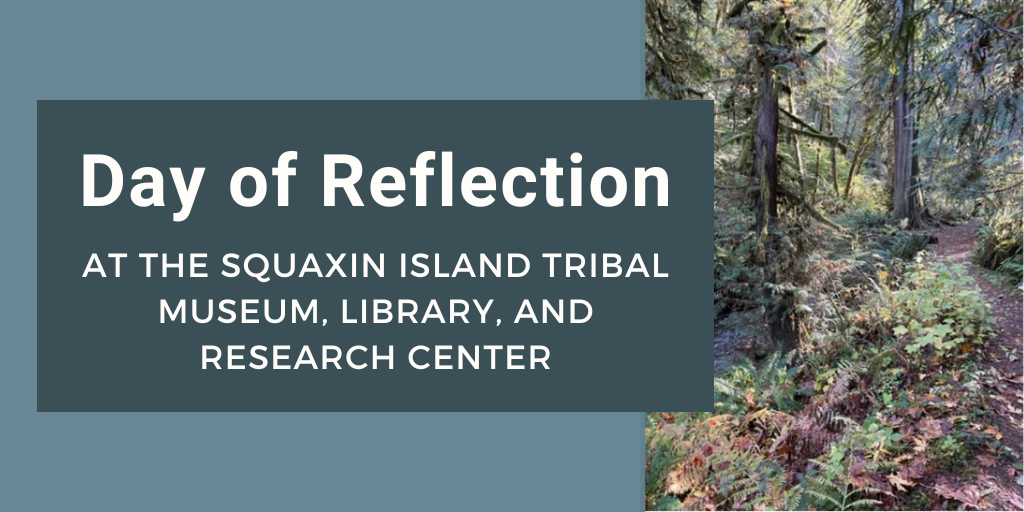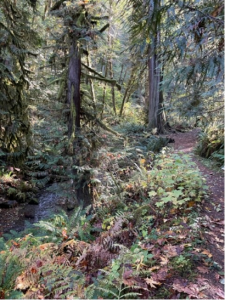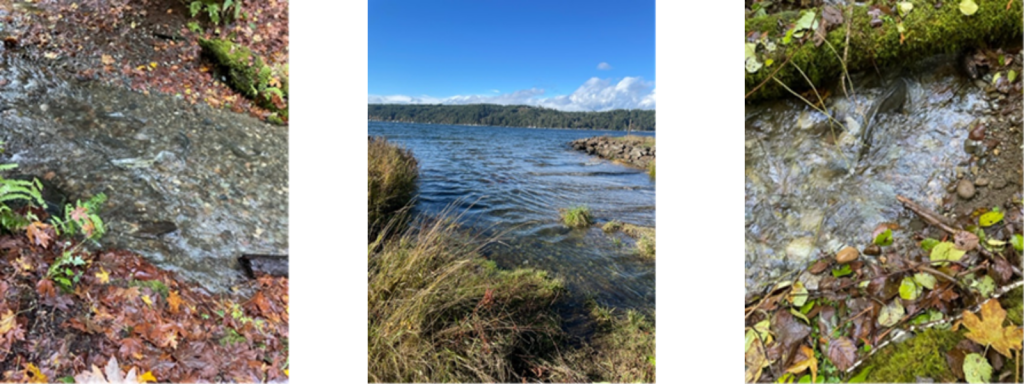1. What is your name?
Amy Lamerson
2. Where did you go?
Squaxin Island Tribal Museum, Library, and Research Center
3. What was your Day of Reflection activity?
I decided to visit the Squaxin Island Tribal Museum, Library, and Research Center to learn about a culture and history that is wholly different and 3,300 miles from where I was born and raised.
4. Why did you choose this activity?
To be intentional and learn about the Indigenous Tribe, the rightful owners of the land where our home currently sits. To allow for greater respect and appreciation within myself for the Native people of this land.
5. Walk through the movements of your day.
One of my morning routines is to stretch and meditate while playing Native American Flutes and Sounds of Nature by Jessita Reyes. This allows time and space to be intentional about how I will experience and view the tasks of the day. I visited the Tribe’s official website to ensure that I had learned all I could before the visit on proper etiquette and respect before entering their land and space. As I played the music this morning, I thought about how to best learn from the visit and what I was looking for on this Day of Reflection.
I continued the music in my truck as I drove the 40 minutes to the Squaxin Tribal Museum. As I arrived at the door, a sign said they were having a Tribal Bazaar with hand-crafted items, homemade fry bread, baked goods, and more. Admission was free on this day due to the special event.
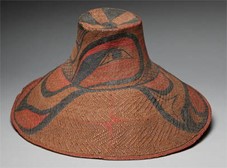 I spent 4 hours (which was not enough time to see everything) looking through the museum at the history, artifacts from past generations, pictures of past lands, and Tribal ceremonies. The wood carvings and hand-woven cedar hats were beautiful and ornate. These hats are one of the most impressive handmade and valuable items I have ever seen in my life. I would encourage anyone interested in Googling how these hats are made and what their benefits are.
I spent 4 hours (which was not enough time to see everything) looking through the museum at the history, artifacts from past generations, pictures of past lands, and Tribal ceremonies. The wood carvings and hand-woven cedar hats were beautiful and ornate. These hats are one of the most impressive handmade and valuable items I have ever seen in my life. I would encourage anyone interested in Googling how these hats are made and what their benefits are.
I then met a man and woman who asked if I had seen the salmon run yet. I answered no, which led to a beautiful conversation of them sharing their Tribe’s history. As I listened, I was drawn to the story of the Pacific Northwest (PNW) salmon and how the Tribes here believe all life is connected to the salmon. They gave me directions on where to drive another 40 minutes to the Northwest to an area called The Hood Canal to the Twanoh State Park in the Olympic National Park. There are beaches on the Puget Sound in this park with views of Mount Olympus. The park’s southern half contains a hiking trail through a green forest of moss-draped trees that filter sunlight. The trail runs along a creek that is filled with chum salmon in the fall. So, once I understood the importance to their Tribe and the land, I had to go check this place out to see these salmon travel on such a journey.
6. How did your Day of Reflection relate to your professional development?
Understanding the importance of other cultures, lands, and beliefs to build upon a broader and richer all-inclusive focus in my work with and for PRA/PRI. Finding more profound meaning in our World builds and strengthens my connection to my community and society as a whole, and helps to strengthen the quality of the work I am able to produce.
7. What was something that surprised or excited you?
I spent well over three hours hiking up and down that mountain stream trail, and at every newly discovered turn in the stream, there were obstacles, barriers, strong water currents, shallow water with boulders, downed trees, and sediment drifts. For someone such as myself, born and raised in the mid-west, all I could think of was how this would be impossible for a salmon to literally climb, flop, and thrust themselves from the water, over and under all these barriers and obstacles. Yet here they are, hundreds of chum and coho salmon making this journey that seems impossible to these human eyes.
8. What about your Day of Reflection do you think will make a lasting impact on you?
The appreciation and respect for the salmon and their life goal and journey to sustain and create life. The salmon are hatched in this stream, and at about 3 to 6 inches long, they then travel up through the Puget Sound to gain access to the open Pacific Ocean, where they will spend a year or so gaining strength, building muscle, and nourishing their bodies to sizes anywhere from 20 to 30 inches long and up to 10 to 15 pounds. They then travel thousands of miles back from the ocean, drawn by every part of their existence to return to this very same stream where they were born to spawn and bring forth the next generation.
9. What will you take from your Day of Reflection experience back to your work at Policy Research?
The inspiration and meaning of the drive, resilience, perseverance, and dedication that I have learned from the Squaxin Island Tribe visit and the PNW salmon. How vulnerability is required to connect with nature, community, and society even when at the risk of predators. How staying focused on what is in nature and focusing on these connections will continue to renew my drive to press on in these difficult and trying times of facing barriers and obstacles surrounding topics like COVID-19; the recession; voting; lack of access to safe, stable and affordable housing; homelessness; serious mental illness; substance use disorders; and all the heaviness that is carried by an empath working in this arena. Valuing the salmon as the strongest and most determined species I have the honor of knowing about it.
Squaxin Island Tribe Culture
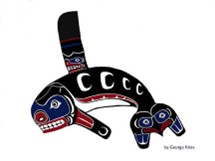 “The Squaxin Island Tribe has a rich culture deeply rooted in the marine environment that we have called home for many thousands of years. We hope you enjoy this small glimpse of who we are as a people. Once again, we welcome you, and we are honored by your presence.”
“The Squaxin Island Tribe has a rich culture deeply rooted in the marine environment that we have called home for many thousands of years. We hope you enjoy this small glimpse of who we are as a people. Once again, we welcome you, and we are honored by your presence.”
“The delicacies offered from the Heart of the Earth (the sea), such as clams, oysters, and salmon, have always been highly respected by our people. The aquatic creatures that sustain us and give us life offer much more than mere physical nourishment; they provide spiritual sustenance as well.” – Squaxin Island Heritage Committee


